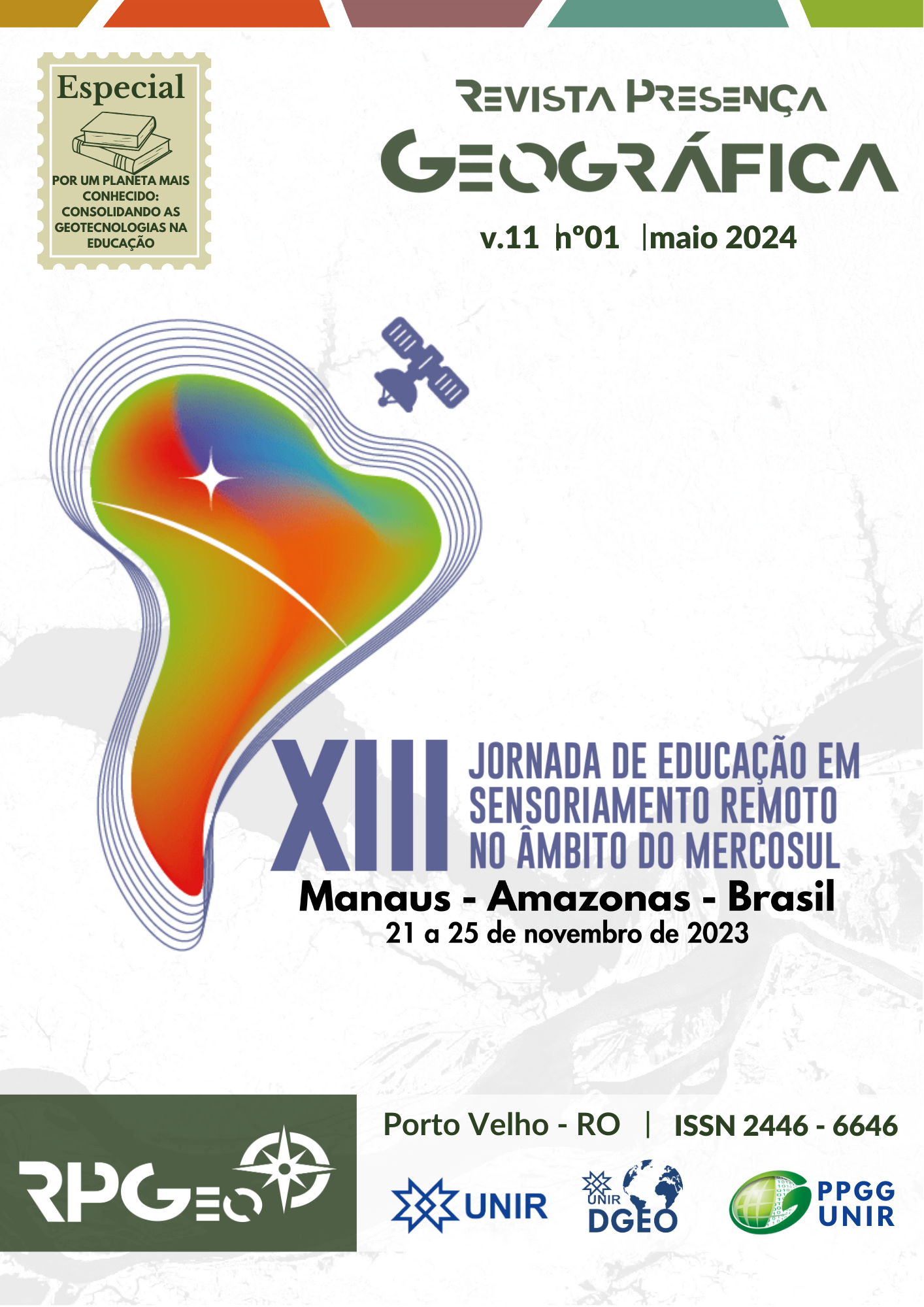WHAT RIVER IS THIS? SCHOOL GEOGRAPHY AND LIVED SPACE: 3D PRINTING AND REMOTE SENSING DATA FOR WATERSHED TEACHING
DOI:
https://doi.org/10.36026/rpgeo.v11i1.7785Abstract
The presence of technological resources has become a reality in public and private education institutions at their different levels (Basic Education and Higher Education). Technologies such as 3D printing, laser cutting, virtual reality, robotics and programming languages and digital cartography itself have been incorporated into pedagogical practices. However, challenges emerge: training teachers to use these tools, integrating disciplinary content with technologies. For example, it is noted that the excessive workload of educators limits their performance and the use of varied resources, as this demands time and preparation for classes. In this context, the objective of this work is to verify the use of the 3D printer in the prototyping of river basins in a municipality in the western region of the State of Paraná based on remote sensing data – Digital Elevation Model from the Shuttle Radar Topography Mission, serving as a didactic model to be used in Geography teaching when addressing this topic in classes. The 3D printed material has been applied in extension actions, in which teachers and students interact with the teaching resource, as a preliminary test for the public that has contact with this resource, to later be inserted into the classroom. The first results indicate a satisfactory response in terms of understanding this resource, its function and representation. However, it is noted that validations of these prototypes are still ongoing, and it is necessary to expand the testing of these resources to fully validate the didactic and pedagogical benefits of using 3D printing and MDE in understanding the concept of river basins.
Downloads
Published
Issue
Section
License
Copyright (c) 2023 ericson hayakawa, Anderson Alves Baltazar , Salete Alves Baltazar , Mateus Marchesan Pires

This work is licensed under a Creative Commons Attribution-NonCommercial-NoDerivatives 4.0 International License.
This work is licensed under Creative Commons Attribution-NonCommercial-NoDerivatives 4.0 Internacional license.
Authors who publish in this journal agree to the following terms:
- Authors retain the copyright and grant the journal the right to first publication, with the work simultane ously licensed under Creative Commons Attribution-NonCommercial-NoDerivatives 4.0 Internacional License that allows the sharing of the work with acknowledgment of authorship and initial publication in this journal.
- Authors are authorized to assume additional contracts separately, for non-exclusive distribution of the version of the work published in this journal (ex, publishing in institutional repository or as a book chapter), with acknowledgment of authorship and initial publication in this journal.
- Authors are allowed and encouraged to publish and distribute their work online (ex.: in institutional repositories or on their personal page) at any point before or during the editorial process, as this can generate productive changes, as well as increase the impact and the citation of the published work (See The Free Acess Policy).












